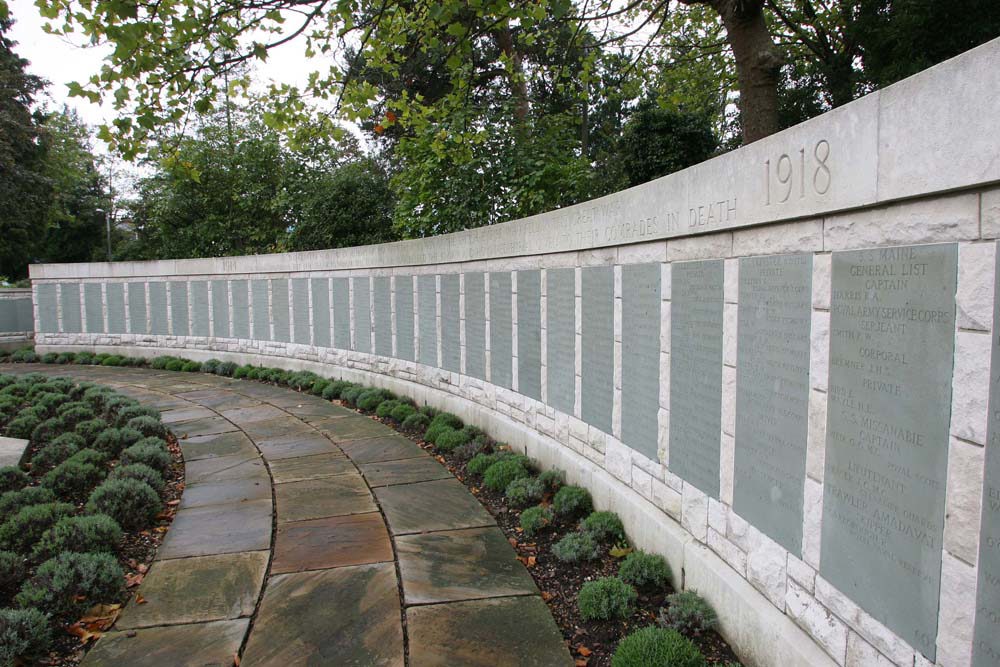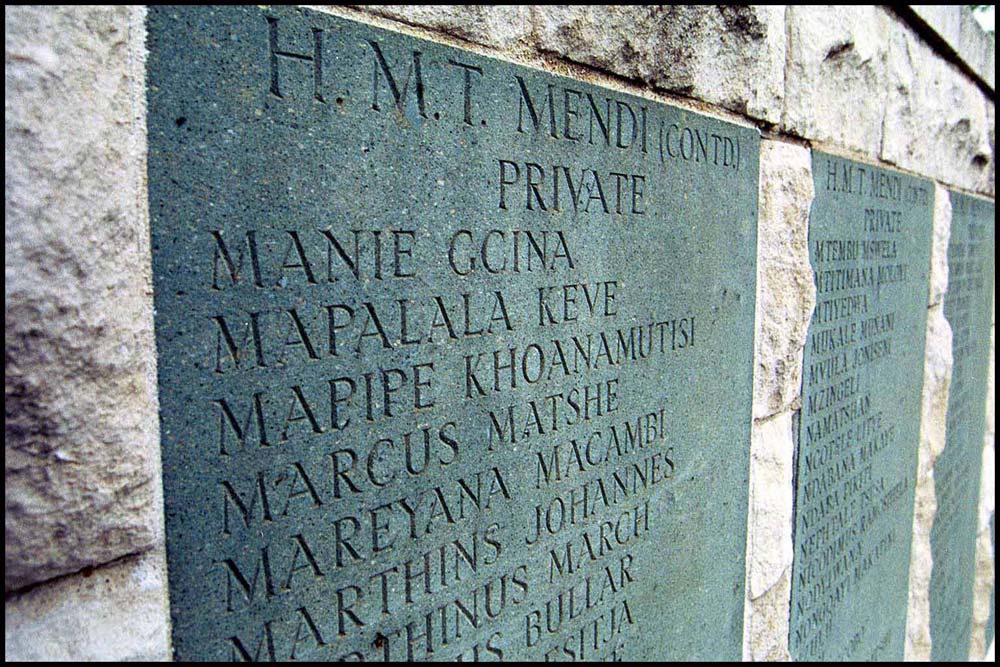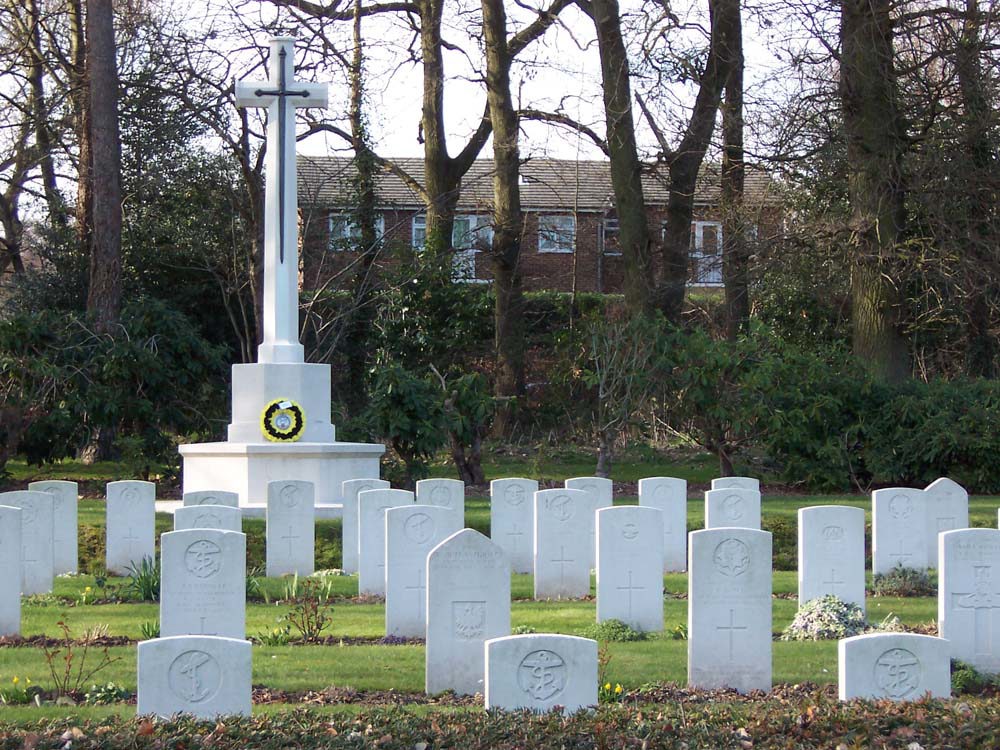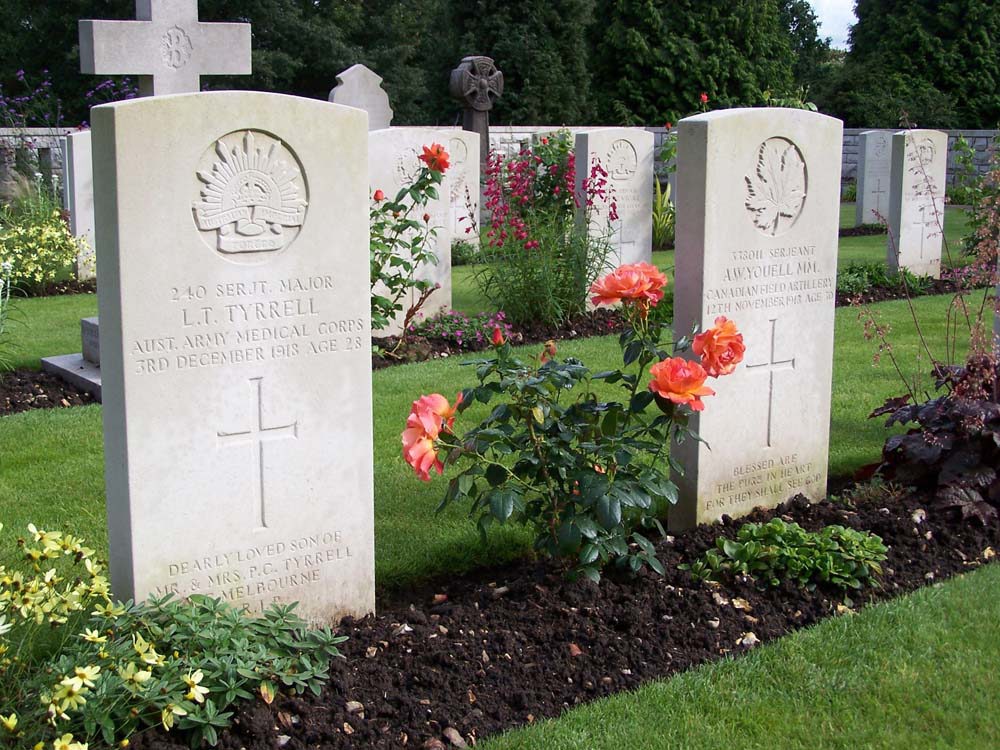19 May 2023
Southampton during WW1 and WW2
The maritime city of Southampton played an important role in the World Wars. Learn more about Southampton in World War One and World War Two with Commonwealth War Graves.
Southampton during WW1
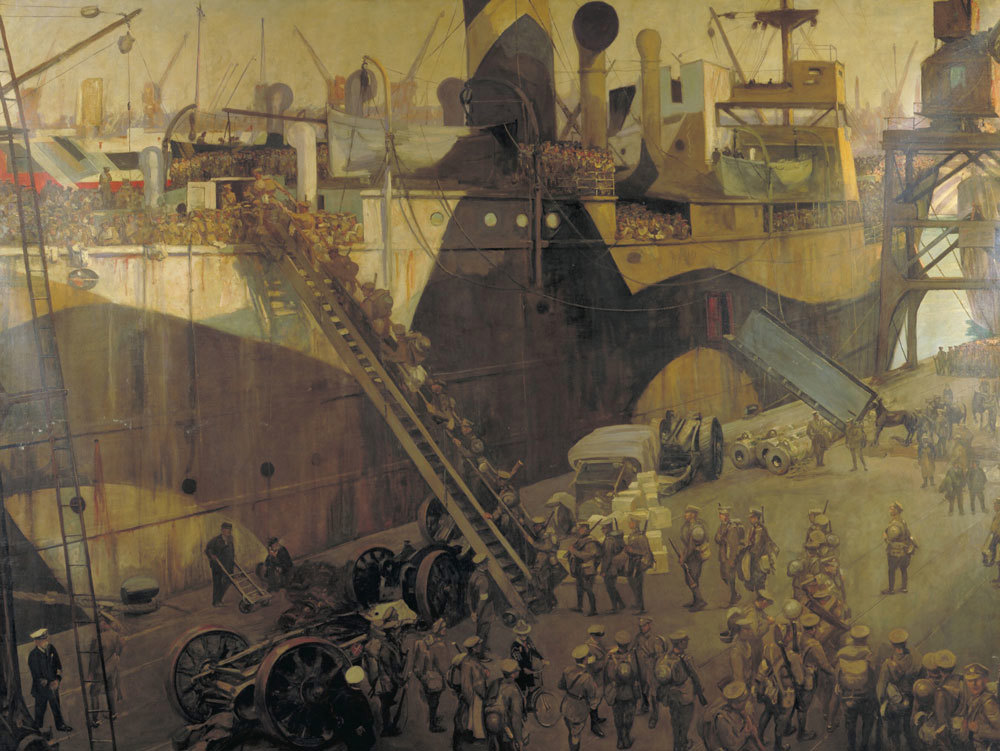
Troops embarking at Southampton, John Lavery. 1917 (Wikimedia Commons)
Southampton has a proud naval history. Today, its docks teem with container ships and cruise liners, living up to the city’s historic reputation as a gateway to the world’s oceans.
It was the same during World War One.
When the time came to transport the British Expeditionary Force to the Western Front, the Old Contemptibles had one clear choice: Southampton.
In August 1914, Southampton was designated Military Embarkation Port No.1 But why Southampton?
The port boasts deep water docks ideal for many large ships. It also sits at the top of a body of water called the Solent.
The Solent stretches up from the English Channel past the Isle of Wight, cutting into the mainland. It is a deep and sheltered waterway: ideal for keeping important vessels away from predatory U-boats.
Southampton Docks were also connected to the rest of the UK by an extensive rail network. Normally, these would be for delivering goods to and from merchant ships. During wartime, however, the railway delivered men and materiel directly to the docks for embarkation.
While waiting to depart, troops were also stationed on Southampton Common, a large open space north of the city centre.
Soldiers on the Common were visited by Southampton’s civilians. The city’s population was keen to keep up the BEF’s morale any way it could, showering them with gifts of tobacco, chocolate, tea, and more creature comforts.
Local newspapers were keen to report Southampton’s important role in moving men and materiel to the front in the war’s early months:
“This was the greatest event in Southampton since the departure of England's troops to Crécy in 1316. When we reflect that it was only on the fourth of this month that war was declared and it is astonishing that by the Eighteenth the nation could be informed that the whole expeditionary force with all their transport wagons, horses, and guns, had been safely landed in France, and that 'without a single casualty.”
Artillery in Southampton during WW1
Artillery was moved in and out of Southampton across the war, but the city’s factories also supplied Britain’s war effort with munitions like high-explosive shells and ammunition.
The British government built a vast brass rolling mill along the dockside. Here, important brass components like cupro-nickel strips and brass cups were built, providing shell casings as well as machine-gun bullet casings.
During World War One, Southampton was also the site of the National Gun Carriage Repair Factory. Here, artillery pieces had their carriages fixed or upgraded.
As most of the city’s men were serving with the armed forces, important munitions production was turned over to the women. Thousands of female factory workers laboured long and hard across the war to ensure those fighting at the front were supplied with munitions.
Unfortunately, the ladies who had toiled hard in Southampton’s World War One munitions factories were unceremoniously let go shortly after the 1918 Armistice.
HMS Southampton WW1
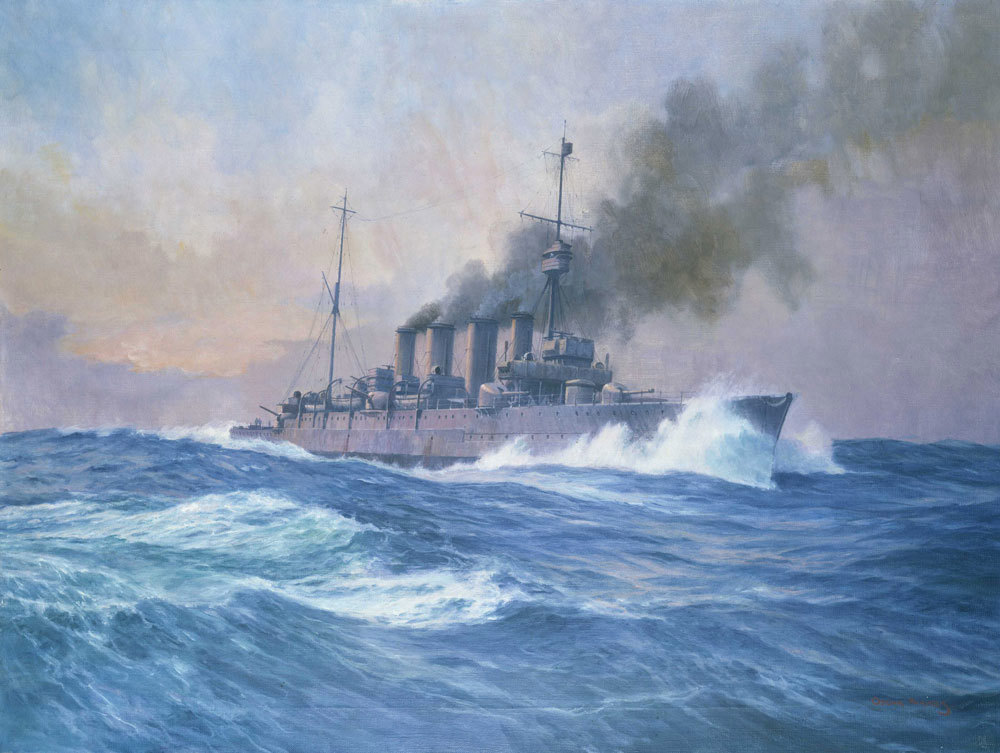
HMS Southampton on the morning of the Battle of Jutland, Oscar Parkes, 1916 (Wikimedia Commons)
In keeping with its naval traditions, Southampton had a ship named after it during the Great War.
HMS Southampton was a Town-class light cruiser that first entered Royal Navy service in May 1912. She was equipped with eight six-inch guns, two submerged torpedo tubes, and a further 4 47mm guns.
Southampton had a busy time in World War One. Under the command of Commode “Barge” Goodenough, the ship was involved in some of the Royal Navy’s key engagements of the war, including the Battles of Heligoland Blight and the Battle of Dogger Bank in 1915.
At the famous Battle of Jutland in late May 1916, HMS Southampton distinguished herself. According to contemporary reports, Commodore Goodenough sent a vital telegram to Admiral Beatty warning him of a trap set by the German High Seas Fleet. The signal reached the British admiral in time, avoiding a major ambush.
Southampton also torpedoed the German light cruisers SMS Fraudenlob, sinking the enemy ship during the action at Jutland.
HMS Southampton was transferred to the 8th Light Cruiser Squadron in 1917 and stayed with the squadron until the end of the war. She was later scrapped in 1926.
How many soldiers embarked from Southampton in WW1?
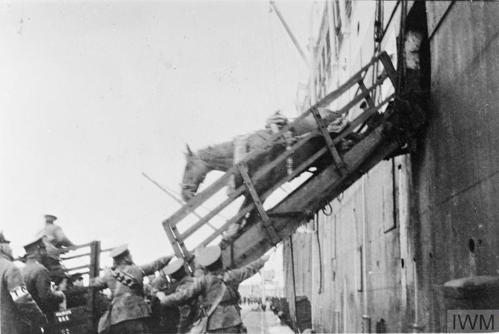 Image: A warhorse disembarks at Southampton Dock. It wasn't only men who passed through the port of Southampton during wartime (© IWM Q 50701)
Image: A warhorse disembarks at Southampton Dock. It wasn't only men who passed through the port of Southampton during wartime (© IWM Q 50701)
It’s estimated seventy million troop movements had been made from the port. This doesn’t include the number of horses and livestock shuttled to the Western Front from Southampton docks, nor the vast volume of supplies.
Around 7.1 million men passed through Southampton by the end of the Great War. Around 350,000 men and officers had been shipped to the Western Front’s battlefields by the end of November 1914 alone.
It wasn’t just soldiers and officers that moved through Southampton, however. More than 4,000 staff embarked and or arrived back in the UK there. Over 150,00 vehicles, 822,000 horses, and 13,100 guns were also loaded or unloaded at Southampton Dock.
Nearly 5,000 tons of munitions were shipped from Southampton each day during World War One too.
Casualties of WW1 from Southampton
Just over 2,100 Southampton WW1 casualties are buried or commemorated in the city itself.
For instance, just shy of 1,900 service personnel are commemorated on the Hollybrook Memorial. More on that later.
However, the bulk of the Great War casualties from Southampton are buried or commemorated overseas in Commonwealth War Graves cemeteries and memorials.
Lieutenant Thomas Brownrigg
Dublin-born Thomas Brownrigg had a connection to Southampton through his parents. By the time of his death in August 1918, Thomas’ parents had been living in Southampton for some time. Thomas was a regular visitor.
Thomas was educated at Belvedere College, Dublin, and was studying at Gray’s Inn to become a barrister in 1913. His war record and fate are laid out in the War Book of Gray’s Inn:
“In 1915, Thomas joined the Inns of Court O.T.C. as a private and was gazetted Second Lieutenant in the 15th Middlesex Regiment, with which unit he served in France from May 1916 to February 1917, when he joined the Royal Flying Corps.
He served in France as a pilot for nine months, being shot down twice in one day. He returned home to recover from his injuries and was then engaged in instructional work in England, where he was drowned when flying on active service on the 21st of August 1918.
His machine crashed during foggy weather in the sea off Southbourne. He was one of three brothers, all with meritorious war records. He was 28 years of age.”
Thomas is buried in Southampton Old Cemetery.
Lance Corporal Albert Brixey & Private Fred Brixey
The Brixey Brothers were two of seven children brought up by their parents around Liverpool Street in the heart of Southampton’s city centre. Their service took them to different far-flung corners of the globe but, unfortunately like so many young men, they would lose their lives in World War One.
Albert Brixey joined the army in 1911 and was assigned to the 21st (Empress of India) Lancers, eventually reaching the rank of Lance-Corporal. Albert’s unit was involved in border skirmishes and small expeditions in India’s northwest frontier during 1916-1916.
Albert died in May 1916 and was buried in a makeshift war cemetery close to the Indus River. His grave has yet to be rediscovered so today Albert is commemorated on the Delhi Memorial (India Gate) in India’s capital.
Fred Brixey served with the Wiltshire Regiment. His unit had served at the ill-fated Gallipoli Campaign but had been transferred back to Egypt prior to Fred joining them. After that, the Wiltshires saw action across the Mesopotamian battlefields of present-day Iraq.
Fred was wounded in battle and tragically succumbed to his wounds in February 1917. He was 21 years old.
Local publication Southampton and District Pictorial said that “before joining the colours, Fred was appointed as Assistant Secretary of the Bevois Town Primitive Methodist Sunday School, which he had been connected with all his life.”
Fred Brixey is buried in Amara War Cemetery, Iraq.
Southampton during WW2
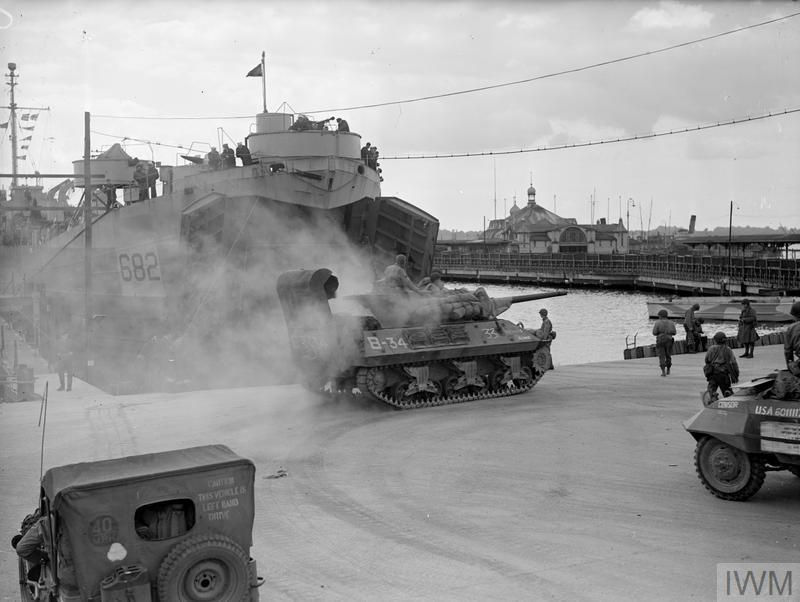
American M10 tank boarding transport at Southampton (© IWM A 24011)
Southampton was once again transformed into an important centre of military and Royal Navy activity during World War Two.
From the British deceleration of war on Germany in September 1939, Southampton was readily transformed into essentially a large-scale military camp.
Hundreds of thousands of British, Commonwealth, and American military personnel were stationed here for the duration of the war.
What’s more, Britain’s most iconic fighter plane of World War Two, the Supermarine Spitfire, was designed, developed and first built in Southampton.
The so-called Southampton Blitz of 1940 brought dark days for the city’s civilians. November 1940 saw terrible bombing, with Southampton’s city centre and industrial areas practically flattened by Luftwaffe bombing.
Southampton in World War Two was also an embarkation point for the D-Day landings.
Why was Southampton important during WW2?
The same characteristics that made Southampton important in World War One made it as important in World War Two:
- Deep harbour
- Extensive docks
- Extensive local industry
Its initial contribution was the movement of men and material to the Second World War battlefields of France.
The British Expeditionary Force sailed from Southampton to Cherbourg in September 1939. It was just seven months later they returned, with many of the Dunkirk “little boats” helping rescue the beleaguered BEF from capture by the Wehrmacht.
The Combined Operations Military Movement Control headquarters was located in the South Western Hotel near the seafront. British Prime Minister Winston Churchill and US President Franklin D. Roosevelt met here at least once during World War Two.
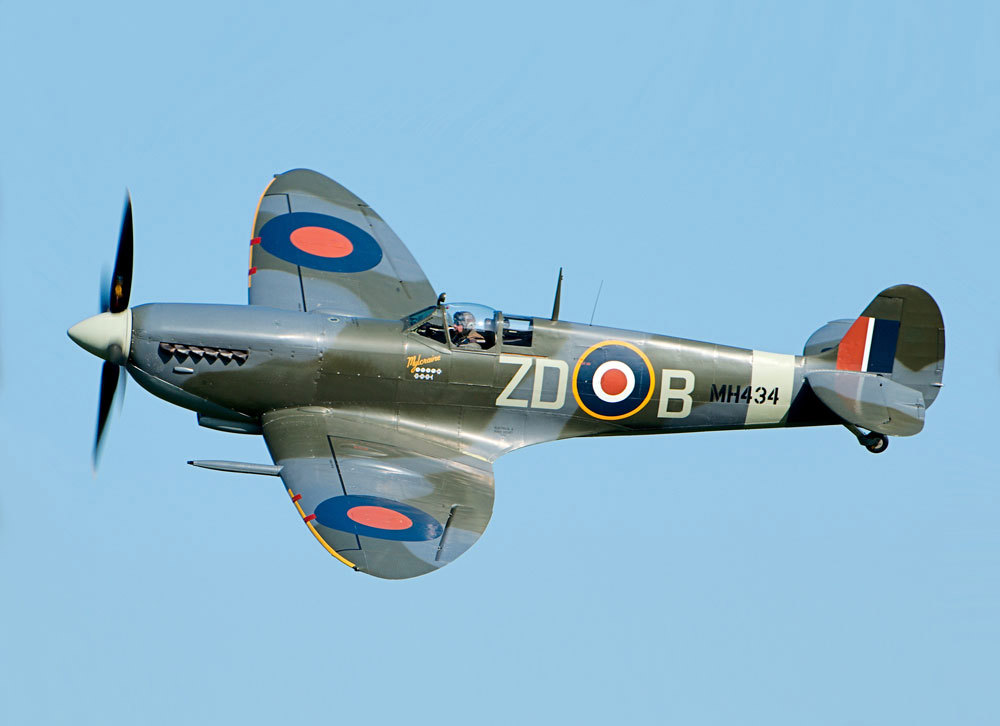
A Supermarine Spitfire, one of World War Two's most iconic fighter planes, was designed and built in Southampton (Wikimedia Commons)
Then there was the industrial side of the war effort. Southampton’s factories continued to provide munitions, machinery, and materiel during WW2.
Southampton’s most famous contribution to the war effort, however, was the Supermarine Spitfire.
The Spitfire was designed by R.J Mitchell and was developed at the Supermarine works in Woolston, Southampton. It made its maiden voyage from Southampton Airport in 1936 and would eventually evolve into one of WW2’s most dominant aircraft.
Around 8,000 were built in and around the city in not only purpose-built factories, but also converted laundries, bust stations, and garages.
It’s hard to imagine what the war would have been like with the Spitfire. Probably Britain’s most famous aircraft of World War Two, the Spitfire was a game-changer when it first entered service. It fought in the skies above the UK, Europe, North Africa, and Asia, helping defeat the Luftwaffe and achieve Allied air supremacy.
Southampton Blitz – Why was Southampton Bombed in WW2?
The Second World War hit Southampton hard.
The characteristics that made Southampton important for the war effort also made the city a choice target for Luftwaffe bombers: the port, docks, and industrial centres.
During the war, 57 bombing attacks were made on the city. 1,500 air raid warnings were issued. Air Raid Precautions (ARP) estimates suggest Southampton was struck by 2,300 bombings holding more than 470 tons of high explosive ordinance.
More than 30,000 incendiary devices were dropped on Southampton in World War Two. Over 45,000 buildings were destroyed or damaged.
The first daylight raid attacked Southampton on 13th August 1940. Five people were killed and many buildings were damaged or destroyed. This set the tone for Southampton’s war. For its citizens, the need to drop everything and dash to an air raid shelter became an everyday occurrence.
The Spitfire factories were particularly heavy hit. Starting on 11th September, the Supermarine factory at Eastleigh was hit, forcing the company to move production to further sites at Itchen and Woolston. Spitfire manufacturing plants and facilities were hit no less than 3 times during Southampton’s blitz.
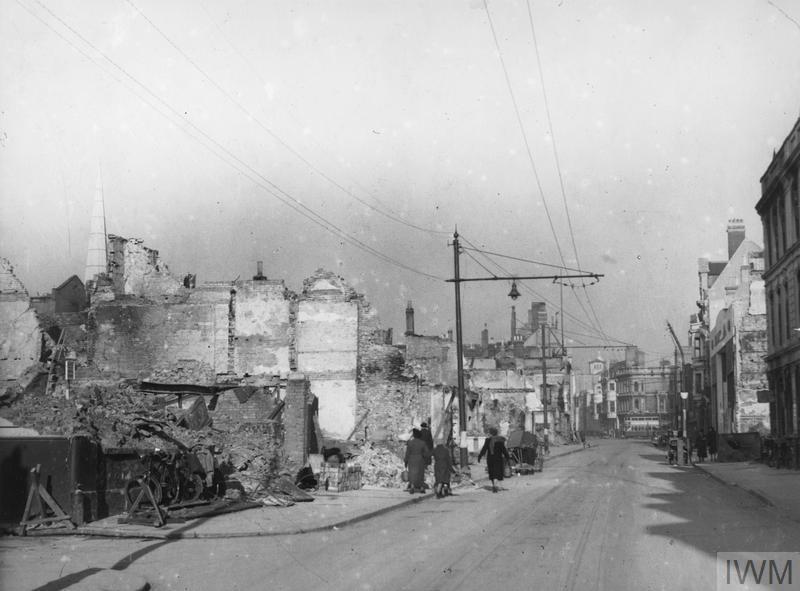
The ruined buildings of Southampton Lower High Street following a night bombing raid (© IWM ZZZ 8205C)
However, by far the worse Luftwaffe raids took place on the 23rd and 30th of November and 1st of December 1940.
On November 23rd, Luftwaffe bombers began their attacks on Southampton at 6:15 pm. The bombings, which lasted until midnight, killed 77 civilians. Bombs hit the city’s Civic Centre complex, many struggling to reach the air raid shelters set up in the basement.
It was said the flow of the burning city could be seen at Cherbourg in Normandy across the English Channel. Southampton was
The Luftwaffe returned a week later. Once more Southampton bore the brunt of a six-hour air raid that lasted from 30th November into the early hours of December 1st.
The 30th November raid saw 800 bombs hit the city. 137 people were killed, 96 of whom were taking refuge in their air raid shelters. Three historic churches were destroyed along with important infrastructure like the Pirelli Cable and General Motors automobile factories.
Air raids would lose their intensity as the Second World War progressed. The last bombings to hit Southampton in wartime came in 1944 when two flying V1 bombs hit the city.
Southampton & D-Day
Operation Overlord will be forever tied to Southampton and its World War Two experience.
The D-Day Landings of June 6th, 1944, remain the largest seaborne military invasion in history. Over 150,000 troops, British, Canadian, and American, landed on Normandy’s beaches on the first day alone.
Success on D-Day helped push the war in Europe to its eventual victorious conclusion. So, how was Southampton involved?
The city was identified very early on in the war as a potential staging point for an invasion of Europe. We already know the BEF used it as its original embarkation point during the ultimately unsuccessful Battle of France in early 1940.
The actual build-up proper began in 1942. The Southampton area was designated “Area C” as one of the chief mustering hubs for what would become Operation Overlord.
Landing craft and support vessels for D-Day were quickly moved to Southampton’s docks.
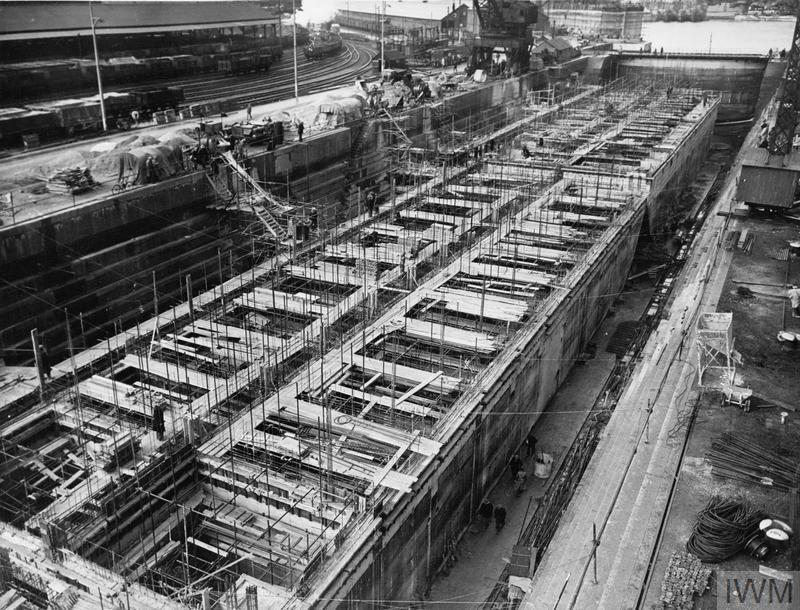
Part of the massive Mulberry floating harbour under construction in a Southampton fabrication yard (© IWM A 25792)
In 1943, the US Army descended on Southampton and essentially took over the port city. Its civilians made fast friends of the Americans, particularly those that supplied them with nylon stockings, chocolate, and Coca-Cola!
25 World War Two military camps were built in Southampton in the run-up to D-Day. The Common was used, as well as inner-city parks.
Southampton’s engineering expertise was also put to good use for Overlord. The colossal Mulberry floating harbours used by the Allies to essentially build an artificial port off the coast of Normandy were partly built in Southampton.
Some of the cross-channel oil pipelines used by the Allies to fuel the invasion force were built locally too.
Come D-Day itself, Southampton was used as the embarkation point for British and Canadian troops. Around two-thirds of the British invasion force embarked at Southampton Dock.
As the war progressed in France, Southampton continued to serve as the embarkation port of choice for the British military. Between June 1944 and the end of the war in May 1945, 3.5 million military personnel had passed through Southampton, along with countless vehicles and thousands of tons of supplies.
How many people died in WW2 in Southampton?
Just over 630 Sotonians were killed during bombing raids. 900 or so were seriously wounded too. More than 1,000 homes were destroyed, not counting the large numbers of factories and industrial buildings targeted during the Southampton Blitz.
How did Southampton change during World War II?
The bombing of Southampton in World War Two radically changed the city.
Many of its old and historic buildings were either outright destroyed or damaged beyond repair. Countless homes, shops, factories, and important military installations were affected by bomb blasts.
The reconstruction of Southampton was done cheaply in order to quickly rebuild the extensive damage.
Although the city was able to bounce back, a lot of the old characterful buildings were gone, with modern replacements springing up in their place. For some, this had a profoundly negative effect on Southampton’s architectural aesthetic.
Hollybrook War Memorial in Southampton
The Hollybrook Memorial commemorates Commonwealth servicemen and women of land and air forces whose graves are not known. The casualties commemorated by the memorial are entirely from World War One.
Who is commemorated here?
Hollybrook also contains the names of those who were lost or buried at sea or who died at home but whose bodies could not be recovered for burial.
Around a third of the names on the Hollybrook Memorial are men and officers of the South African Native Labour Corps. Far from home and in unfamiliar territory, these men died after their transport ship, the SS Mendi sank in the channel following a collision with a friendly vessel.
Other vessels that sunk and whose casualties are commemorated on the Hollybrook Memorial include:
- HS Anglia – November 1915
- SS Citta Di Palermo - January 1916
- HMT Donegal – April 1917
- HS Glenart Castle - February 1918
- HMT Warilda – August 1918
One of the most famous casualties commemorated at Hollybrook is Field Marshall Lord Herbert Kitchener.
The former military man was one of the most famous soldiers in British military history. He was serving as Secretary of State for War at the time of his death when his ship, HMS Hampshire, struck a mine and was sunk off Scapa Flow on 5th June 1916.
Southampton War Cemetery
As we know, World War-era Southampton was an important and very busy place. During the Great War, many of its buildings were converted into military hospitals. They treated wounded and sick military personnel from the home and Western Front.
Many of those that died during their stay in Southampton’s military hospitals are buried at Hollybrook. The cemetery also contains burials from those who fell ill or died during training or other military activities at home.
Who is commemorated here?
Hollybrook Cemetery holds just over 375 burials. The majority of these are UK casualties of the First and Second World Wars, but Commonwealth and Allied nation service personnel are commemorated here too, including:
- Australians
- Canadians
- South Africans
- Poles
- Norwegians
- Dutch
Nearly 60 of Hollybrook’s burials are German casualties.
How to find a grave at Hollybrook War Cemetery
To find a grave at Hollybrook War Cemetery in Southampton, you can visit the cemetery page.
Here, you can download a list of all the casualties buried here. The casualties list contains each war grave plot as well as the casualty’s name, their regiment, and more identification information.
Plot information is also available at the cemetery.
For more information on how to search for casualties at our Southampton war cemeteries and memorials, be sure to check out our research guides.
They are full of easy-to-follow information on how best to use our website to discover those in our care and their stories.
Visiting Hollybrook War Cemetery
Hollybrook War Cemetery is in central Southampton.
Come and visit us this War Graves Week! War Graves Week is our annual awareness event where we share more about the important work we do and the stories of those in our care.
Hollybrook Open Day is a great way for you to come down and see the cemetery, meet our staff, and learn more about our shared history. There will be lots for everyone of all ages to see and do so we hope you can join us this May.
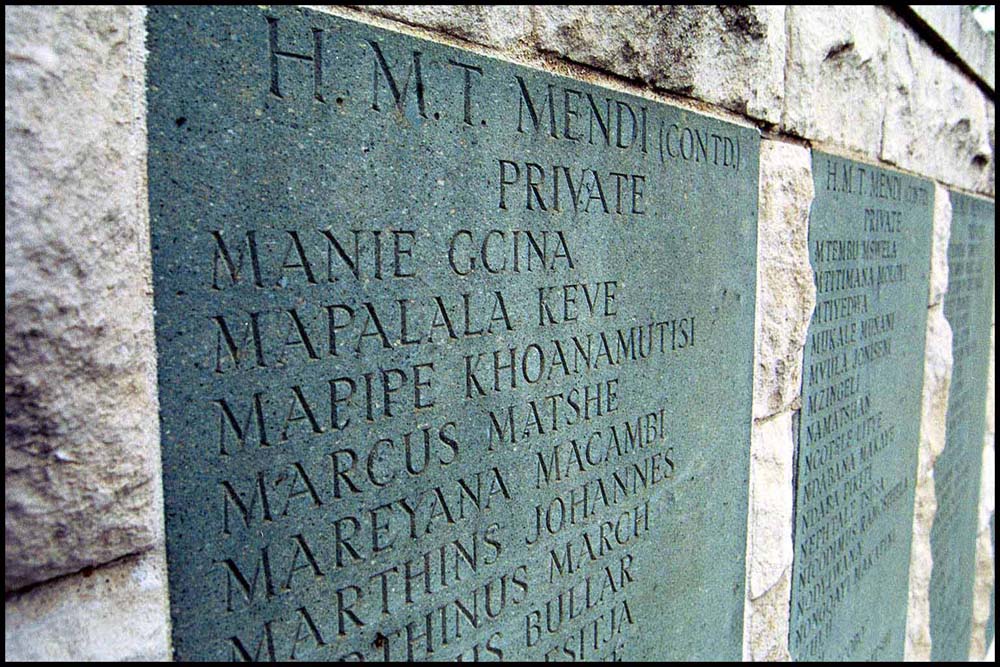
Did you know Commonwealth War Graves looks after 12,000 sites across the UK? From large-scale memorials to individual burials, our war graves are everywhere. Find our war memorial sites near you to learn more.



